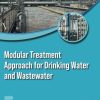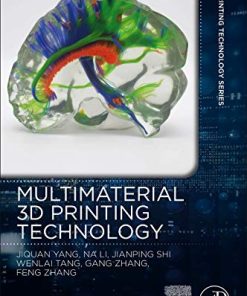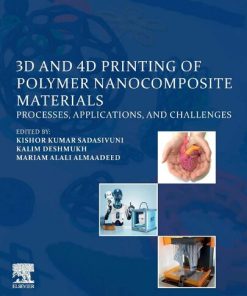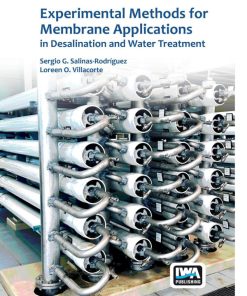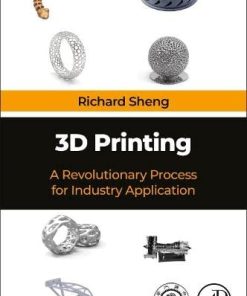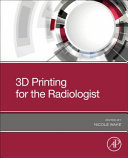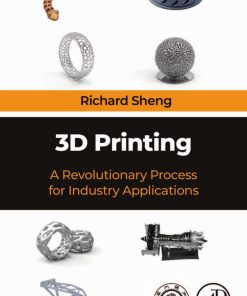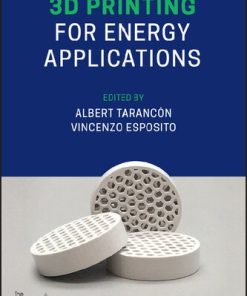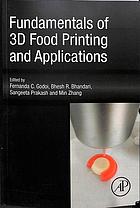3D Printing Technology for Water Treatment Applications 1st edition by Jitendra Kumar Pandey 0323914192 9780323914192
$50.00 Original price was: $50.00.$25.00Current price is: $25.00.
3D Printing Technology for Water Treatment Applications 1st edition by Jitendra Kumar Pandey – Ebook PDF Instant Download/DeliveryISBN: 0323914192, 9780323914192
Full download 3D Printing Technology for Water Treatment Applications 1st edition after payment.
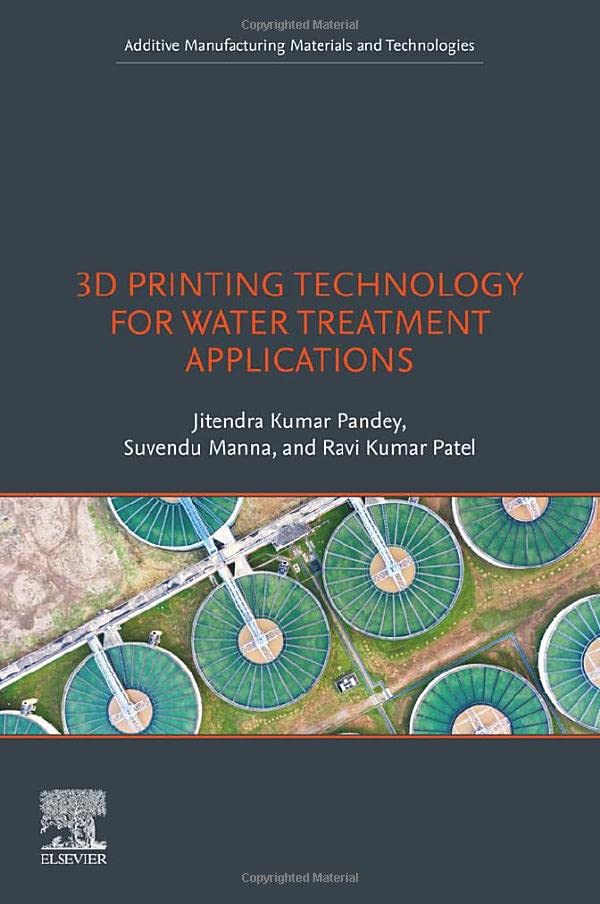
Product details:
ISBN-10 : 0323914192
ISBN-13 : 9780323914192
Author: Jitendra Kumar Pandey
3D Printing Technology for Water Treatment Applications provides a state-of-the-art presentation on the application of 3D printing technology in water treatment. The book discusses numerous processes and their scope for improvement through the use of 3D-printing technology, including pollutant separation from water and an overview of the advantages and disadvantages of different 3D printed technology over current technologies. In addition, the future outlook for device development using 3D printing water purification is explored. Finally, sustainability issues relating to 3D printing-based water purification processes are discussed, describing specific technologies such as 3D printed membranes.
3D Printing Technology for Water Treatment Applications 1st Table of contents:
Chapter 1. An overview of the advances in the 3D printing technology
1.1. Introduction
1.2. Technology classification for 3D printing
1.3. Materials for 3D printing
1.4. Applications of 3D printing technology
1.5. Limitations of 3D printing
1.6. Future and conclusions
Chapter 2. Fabrication of microchannel for water treatment using 3D printing
2.1. General
2.2. 3D printing of microchannel
2.3. Solid modeling
2.4. Device design
2.5. TMA analyzer
2.6. Conclusion
Chapter 3. Recent advances on 3D printing for wastewater treatment and process optimization using artificial intelligence and machine learning: updates and perspectives
3.1. Introduction
3.2. Overview and scope
3.3. Principles
3.4. Current applications
3.5. Application of 3D printing for water treatment using membrane technology
3.6. Membrane materials and their fabrication methods
3.7. Advanced applications of 3D printing for wastewater treatment
3.8. Optimization and sustainability of 3D printing technology in wastewater treatment
3.9. Computational intelligent techniques for control and cost optimization of wastewater treatment
3.10. Future prospects and next generation applications of machine learning for wastewater treatment
3.11. Summary
Chapter 4. An overview of water pollutants in present scenario
4.1. Introduction
4.2. Source of pollutants
4.3. Emerging pollutants
4.4. Water purification technologies
4.5. Conclusion
Chapter 5. A brief overview on advances in water treatment process
5.1. Introduction
5.2. Suspended solid removal
5.3. Adsorption
5.4. Moving bed biofilm reactor (MBBR)
5.5. Solar desalination
5.6. Advanced oxidation processes
5.7. Reverse osmosis
5.8. Electrodialysis
Chapter 6. 3D-Printed membrane for water treatment
6.1. Introduction
6.2. Water pollutants
6.3. Membranes for wastewater treatment
6.4. Wastewater treatment processes
6.5. Membrane modules and selection
6.6. 3D printing technology (additive manufacturing)
6.7. 3D printed materials for desalination and membrane separation
6.8. Membrane separation
6.9. Membranes for filtration
6.10. Capsules or biocarriers for wastewater
6.11. Substrates for oil-water separation
6.12. Dye degeneration in water treatment
6.13. Use of graphene aerogels in water filtration
6.14. Use of ceramics in water treatment
6.15. Challenges of 3D printing
6.16. The outlook for future
6.17. Conclusions
Chapter 7. Application of nanotechnology in water and wastewater treatment and the vast vision for the future
7.1. Introduction
7.2. The vision of this study
7.3. The need and the rationale of this study
7.4. The scientific doctrine in the field of nanomaterials and engineered nanomaterials and the need of sustainability
7.5. What exactly do we mean when we say nanoparticles and designed nanomaterials?
7.6. Environmental sustainability, scientific progress, and a broad vision for the future
7.7. Recent scientific advances in environmental preservation, as well as a visionary road forward
7.8. Recent scientific advances in the application of nanotechnology in water and wastewater treatment
7.9. Recent scientific advancements in the application of environmental sustainability in human society and the road ahead
7.10. 3D printing, device development, and water treatment applications
7.11. Heavy metal and arsenic groundwater remediation, the application of nanotechnology and the visionary future
7.12. Future scientific recommendations and future flow of scientific ideas
7.13. Conclusion, summary, and environmental engineering perspectives
Chapter 8. 3D printed membranes for oil/water separation
8.1. Introduction
Chapter 9. Use of 3D printed techniques for organic pollutants removal
9.1. Introduction
9.2. Organic pollutants: classification and adverse effects
9.3. Techniques to detect organic pollutants and their removal
9.4. 3D printed techniques for organic pollutant detection and removal
9.5. Advantages of 3D printed techniques
9.6. Future perspectives of 3D printed techniques
9.7. Conclusion
Chapter 10. Resource management using 3D printing technology
10.1. Introduction
10.2. The significance of 3D printing
10.3. Current applications of 3D printing in water treatment
10.4. Current trending fields where 3D printing is employed for water treatment and water quality analysis
10.5. Summary
Chapter 11. Sustainability of 3D printing in industry 4.0: A brief review
11.1. Industry 4.0—past, present, and future
11.2. 3D printing
11.3. 3D printing and Industry 4.0—potential and future scope
11.4. Conclusions
People also search for 3D Printing Technology for Water Treatment Applications 1st:
current 3d printing technology
explain 3d printing technology
technology used in 3d printing
chemicals used in 3d printing
3d printed materials in water treatment applications
Tags: 3D Printing Technology, Water Treatment, Applications, Jitendra Kumar Pandey
You may also like…
Engineering
Engineering - Industrial Engineering & Materials Science
Engineering - Engineering Technology
3D Printing: A Revolutionary Process for Industry Applications 1st Edition
Engineering
Computers - Hardware


